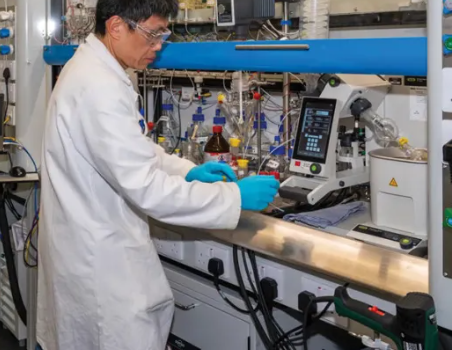
In today’s fast-paced industrial landscape, research and development (R&D) is more than a buzzword—it’s the foundation of modern manufacturing progress. By embedding R&D into the production process, companies can streamline operations, accelerate product launches, and optimize resource utilization. It’s a shift from theoretical innovation to practical, measurable results on the production floor.
For sectors like fast-moving consumer goods, food and beverage, and consumer products, this integration of R&D drives meaningful transformation—from developing new formulations and sustainable packaging to reducing time-to-market and cutting operational waste.
Let’s explore how manufacturing driven by R&D is evolving and positioning businesses to meet future challenges head-on.
The Strategic Importance of R&D in Manufacturing
1. Addressing Industry-Wide Challenges
Manufacturers today face mounting pressures, from environmental targets to supply chain vulnerabilities. R&D acts as a problem-solving engine that helps companies navigate:
- Decarbonization goals by creating low-emission processes.
- Talent shortages through automation and AI integration.
- Lagging productivity by updating systems with smart technologies.
- Volatile supply chains through flexible production models.
- Regulatory updates with compliance-focused innovation.
These obstacles are opportunities in disguise—addressed effectively, they become launchpads for operational excellence and competitive differentiation.
2. Supporting the Shift Toward Industry 4.0
As manufacturing enters the era of intelligent automation, R&D is the catalyst that brings Industry 4.0 to life. Whether it’s using connected devices to monitor performance or prototyping with 3D printing, innovation drives efficiency and agility.
The UK government’s R&D tax incentive plays a crucial role in supporting this transition, enabling manufacturers to experiment and evolve without bearing the full financial risk.
3. Making Innovation Financially Viable
Developing new products or systems isn’t cheap. However, with R&D tax relief, manufacturers can reclaim significant portions of their development spend, including:
- Employee salaries and pension contributions
- Software used during development
- Consumables for testing and trials
- External expertise and subcontracted support
- Certain travel expenses tied to R&D activity
For both startups and established companies, this financial support can be the tipping point that enables bold investments in innovation.
Who Can Claim R&D Tax Relief?
You don’t need to run a lab to qualify. Eligible R&D activities happen across departments—from design to production. Common contributors include:
- Engineers and product designers developing new systems or materials
- Technicians gathering data and performing trials
- Scientists driving experiments and technical discovery
- Project managers overseeing timelines and resource allocation
- Compliance teams ensuring new developments meet industry standards
- Operators implementing changes on the shop floor
If your business tackles technical challenges, it’s likely that you have qualifying activities in more than one area.
Where R&D Is Driving Change in Manufacturing
R&D is not confined to a single corner of the factory. It’s redefining performance across all major sectors:
Automotive and Aerospace
Lightweight materials, hybrid propulsion systems, and autonomous vehicle technologies are transforming both industries. R&D here helps improve fuel efficiency, safety, and regulatory compliance.
Electronics and Robotics
From semiconductors to smart devices, innovation is accelerating. With a large portion of UK business R&D spend going into electronics, this sector is leading the charge in efficiency and automation.
Textiles and Apparel
R&D is redefining what fabric can do—enabling properties like antimicrobial performance or temperature regulation while also driving sustainable production and recycling models.
Food and Beverage
Manufacturers are enhancing food safety, developing plant-based alternatives, and creating eco-friendly packaging—all while improving shelf life and production efficiency.
Renewable Energy
Solar panels, wind turbines, battery storage—each breakthrough reduces the cost and environmental impact of clean energy, making R&D critical for sector expansion.
Wood and Paper
Sustainable sourcing, efficient processing, and biodegradable alternatives are reshaping this traditionally conservative sector, with R&D as the enabler.
Metal and Machinery
The push for precision, durability, and automation in heavy industry depends on continual innovation. R&D enables new treatments, alloys, and manufacturing techniques that power construction and engineering projects.
Taking Action: Claiming Your R&D Incentive
If your business is solving technical problems through experimentation or system development, you’re likely eligible for R&D tax relief. Whether you’re prototyping new equipment or enhancing sustainability, your efforts can be mapped to claimable costs.
Working with R&D tax specialists can help ensure your claims are accurate and optimized. A structured approach not only improves your chances of success but also reduces risk and administrative burden.
Conclusion: Building the Future of Manufacturing
In the face of environmental imperatives, talent shortages, and global competition, R&D has become essential to manufacturing’s evolution. It’s how companies stay agile, compliant, and ahead of market expectations.
Incentives like R&D tax relief ensure that innovation isn’t reserved for the largest players—it’s a viable path for small and medium manufacturers, too. As regulatory frameworks shift and technologies evolve, R&D remains the foundation for growth that’s not only faster, but smarter.
Investing in R&D today isn’t just about keeping up—it’s about setting the standard for the manufacturing sector of tomorrow.









